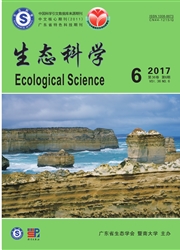

 中文摘要:
中文摘要:
动物形态特征的地理变异是动物对不同环境条件下长期适应的结果。大壁虎是我国名贵动物药材,被列为国家Ⅱ级重点保护动物,具有分布范围广、分布地区不连续以及分布区内环境条件变化剧烈等特点。通过对广西、云南和越南的大壁虎进行深入调查,采集大量样品分析后发现,大壁虎随着分布区环境条件的不同,其色斑特征和疣粒存在明显的差异:分布在石山环境,其体表光泽度较好,斑点较小,颜色较素净,疣粒均为钝圆凸起;而分布在土山(或橡胶林)环境,其体表光泽度较差或无光泽,斑点较大,颜色鲜艳醒目,疣粒为锥状凸起或者钝圆凸起和锥状凸起两种。钝圆凸起的疣粒为白色,而锥状凸起为桔黄色。这些结果表明可能是当地环境因子选择作用对大壁虎的色斑和疣粒变化产生了重要影响。
 英文摘要:
英文摘要:
The geographical variation of animal morphologic characteristics reflects its long-term adaption under different environmental conditions. Tokay gecko(Gekko gecko), a Chinese traditional drug, has been listed as a Class II Protected Animal in China. It was characterized by wide-range distribution in different discontinuous areas and dramatic changes in its habitats. Here we made more detailed field surveys on the mainland of China(Guangxi and Yunnan) and Vietnam, and collected a large number of samples and compared the morphological variations. The results showed that the color spots and tubercles of Gekko gecko had significant differences in different habitats. In rocky mountains, the body surface of Gekko gecko had finer gloss, smaller spots, plain colors and blunt round tubercles, while in mountains of soil(or under rubber tree forest), it had poor gloss or lackluster, larger spots, bright colors and pyramidal tubercles or both pyramidal and blunt round tubercles. Blunt round tubercles were white and pyramidal tubercles were orange. This morphological variation of color spots and tubercles of Gekko gecko may result from the selection of local environmental factors.
 同期刊论文项目
同期刊论文项目
 同项目期刊论文
同项目期刊论文
 期刊信息
期刊信息
